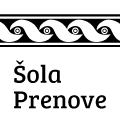
Archaeological sites: Echoes of Millennia Past
Slovenia’s archaeological sites, including historic towns, boast several exciting discoveries that highlight the area’s vibrant past and significant geostrategic importance. Some of these finds even hold global significance. Can you name a few?
One of the most renowned prehistoric sites in Slovenia is Potočka zijalka, a cave dwelling dating back approximately 40,000 years. It offers a vivid glimpse into the life of Ice Age humans, showcasing animal remains, stone tools, hearths and the world’s oldest knitting needle. Another notable site is the Palaeolithic archaeological site above the Idrijca River, known as Divje babe, where over 60 remains of various animal species have been found and the world-famous Neanderthal flute, estimated to be around 60,000 years old and considered the oldest musical instrument globally. Did you know you can play any melody on it, even the most challenging ones? Preserved by the National Museum of Slovenia, this unique artifact demonstrates the artistic sophistication of Neanderthal humans. Moreover, amidst the remains of pile-dwellings in the Ljubljana Marshes, a UNESCO World Heritage Site, an unexpected archaeological gem was discovered: a 5,200-year-old wooden wheel with an axle, making it the oldest wooden wheel ever discovered.
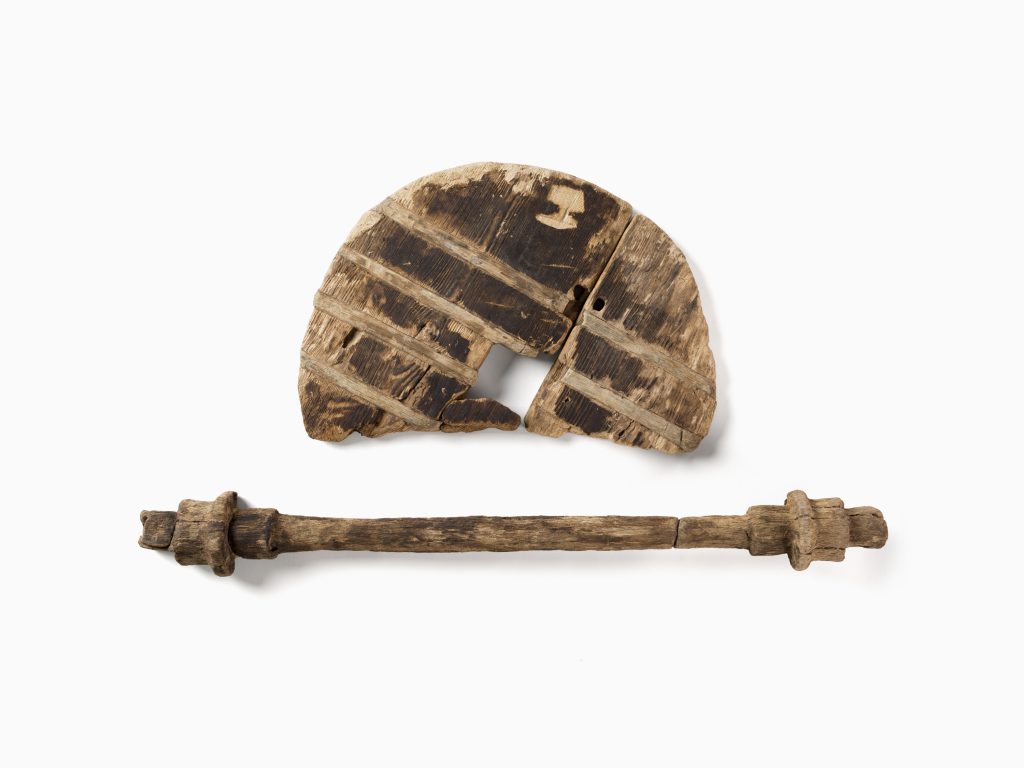
The world’s oldest wooden wheel with an axle. Photo: Andrej Peunik / MGML
The oldest coin, beautifully decorated situlas, rare military armour and a Celtic war chariot, perfectly preserved heritage of Roman settlements… Also, in Slovenia’s historical towns, an array of archaeologic treasures from prehistoric times awaits you. Listen to the captivating stories of our ancestors’ lives and habits, their struggles for survival and dominance, as well as the stories of progress and prosperity. You may even uncover something new about yourself along the way.
Discovering History through Found Objects
Mesolithic Treasure: The Bear’s Tooth
Embark on an enchanting journey through the rugged Mežakla plateau, standing tall above Jesenice, where natural and cultural attractions intertwine in harmony. Amidst this picturesque landscape lies a hidden gem of profound significance. In 1982, Pavel Jamnik, a devoted local archaeology enthusiast, stumbled upon a trove of ancient artifacts within a shallow cavern, its entrance guarded by towering cliffs. Among the treasures found there were a brown bear’s tooth, a shard of quartz, several flint flakes and a peculiar bone resembling a harpoon. Through thorough analysis, these discoveries were dated back to the Middle Stone Age or Mesolithic period, i.e. to approximately 9000 to 6000 BC. They are on display at the National Museum of Slovenia.

Unveiling Millenia of Bela Krajina’s History
The archaeological richness of Bela Krajina continues to surprise; in the heart of Črnomelj’s old town, artifacts like a late antique coin and the recently discovered remains of a defensive tower beneath Črnomelj Castle exemplify the area’s historical depth. While the tower might not currently be accessible due to castle renovations, visitors can delve into Črnomelj’s history at the Črnomelj Town Museum and explore remnants of its prehistoric, ancient and medieval settlements in The City Beneath the City exhibition at the Pastoral Centre.
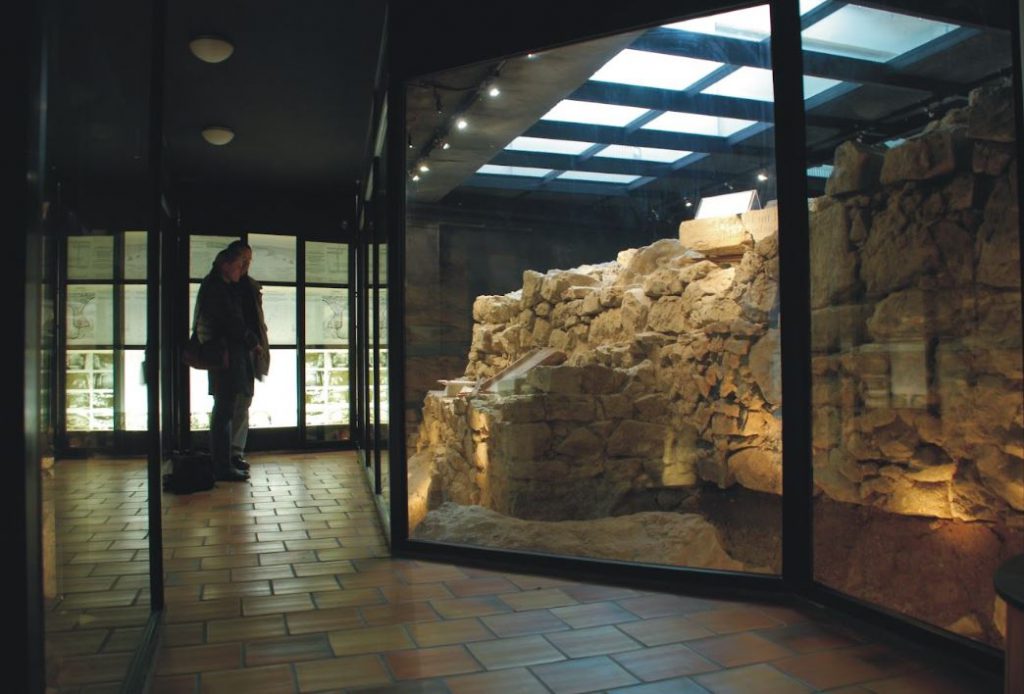
Though not much is known about the early inhabitants of Bela Krajina, they’ve left behind a wealth of significant traces. Dating back to 5000 BC, the oldest artifacts, housed at Metlika Castle within the Archaeological Treasures of the Bela Krajina collection, form part of the comprehensive exhibition at the Bela Krajina Museum. Visitors should not overlook the Iron Age artifacts showcased in Podzemlje near Metlika. Among them, you will find a bronze helmet, a prized symbol of status reserved for the elite in death, dating back to the 4th century BC and the oldest gold coin ever discovered in Slovenia, the Alexander the Great’s coin, crafted in the first half of the 3rd century BC. And for the youngest adventurers, a delightful feature awaits: meticulously crafted replicas of select exhibits, which they can touch and feel a direct connection with the lives of our distant ancestors.
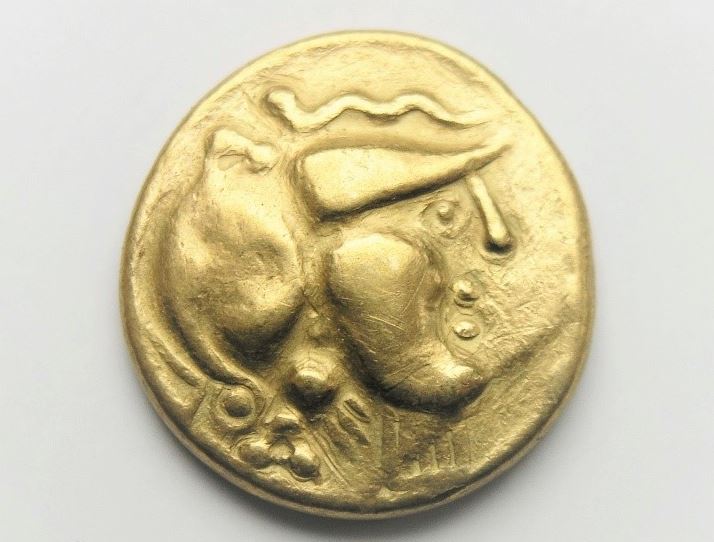
Rhino and Mammoth Remains
Within the collections of the Kamnik Intermunicipal Museum lies a fragment of the jaw belonging to an extinct dwarf rhinoceros, dating back to the Oligocene area, approximately 25 million years ago. Isn’t this remarkable to contemplate? Equally exciting is the story of a mammoth skeleton discovered in the settlement of Nevlje near Kamnik in 1938. This mammoth, which once roamed the area of modern-day Kamnik some 15 to 20 thousand years ago, captivates the imagination. While the renowned skeleton is housed at the Natural History Museum of Slovenia, visitors can delve into its captivating story at the permanent exhibition of the Kamnik Museum, “Reflections of the Kamnik Millennia.” Here, amidst the remnants of a hunter’s dwelling from the Old Stone Age, a Roman kitchen, and a barrel maker’s workshop, visitors can immerse themselves in the everyday life of the region’s past. The interactive exhibits also offer insights into the bustling life within the castles of Kamnik, once a pivotal trading hub in our region’s history.

Photo: The Natural History Museum of Slovenia
From Amphora to Urn
Step back in time to the Roman conquest of the Istrian peninsula in the 2nd century BC with a captivating permanent archaeological exhibition at the Koper Regional Museum, titled “From Amphora to Urn”. Amphorae, these ceramic vessels with pointed bases, were indispensable commodities in the Roman economy, used for transporting oil, wine, and other essential goods. Urns, on the other hand, served as vessels for storing the ashes of the deceased, representing a prevalent burial practice throughout the Roman Empire, including Istria. Through these symbolic objects, which bridge the worlds of the living and the dead, the exhibition unveils the story of Koper‘s Roman era spanning half a millennium. Even the youngest visitors to the museum will find fascination in discovering Roman daily life, from the lighting of lamps to culinary preferences, attire, and pastimes.
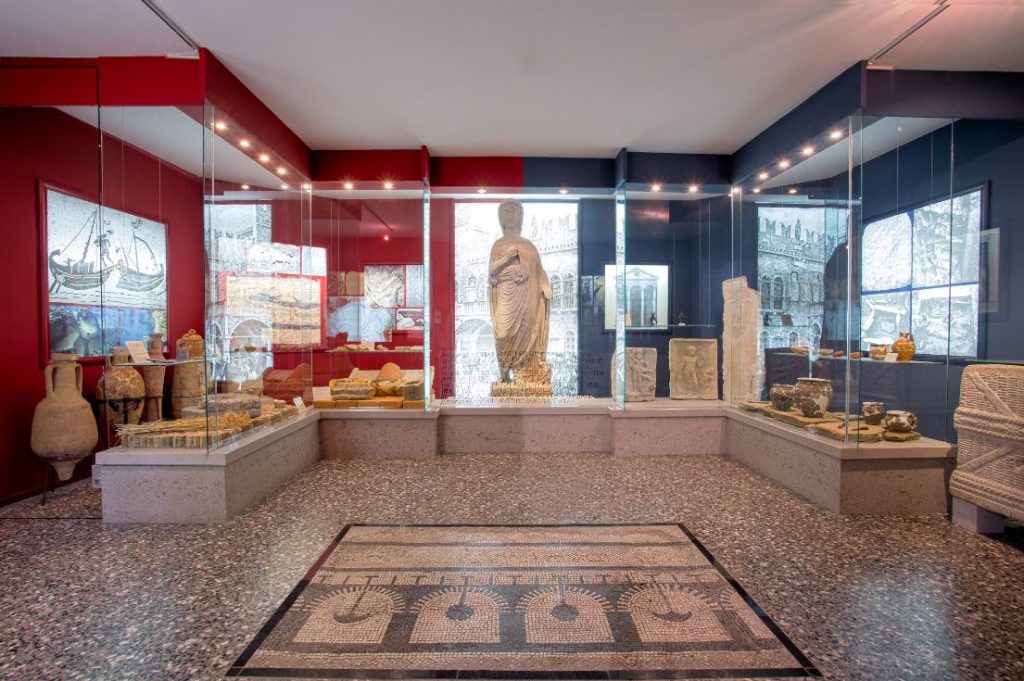
Discovering the Oldest Millet
The Javorník hill overlooking the old town of Ravne na Koroškem, offers fresh insights into the history of the early settlements of Carinthia. Fragments of pottery unearthed during excavations trace back to the early Copper Age, spanning from 4300 to 3900 BC, but recent discoveries, including astonishing millet samples, hint at the wealth of treasures yet to be unearthed at Javornik. The oldest millet sample, dating back to the end of the 14th or 13th century BC, represents the oldest known millet sample in Slovenia. These invaluable grains are safeguarded by the Institute of Archaeology of the Slovenian Academy of Sciences.

Javornik archaeological site, foto: The Carinthian Regional Museum
Unveiling Rare Metalwork Treasures
In 2005, a precious finding was discovered in a backyard in Kranj: the equipment of warriors from an elite group dating back to the second half of the 6th century. Remarkable artifacts were found: lamellar armour and a spear-shaped weapon called ango, unparalleled not only in Europe but globally, as only seven are known to exist. The presence of these artifacts not only speaks to the influence of the Franks and the Byzantine Empire but also underscores the pivotal strategic importance of Carniola, Kranj’s predecessor, in late antiquity. To delve deeper into the status symbols of the military elite from this era, explore the permanent exhibition “In the Glitter of Metalwork” at the Gorenjska Museum, watch an engaging video presentation or take a look at the captivating timeline within the tunnels beneath Kranj.

Interested in what museums in historic towns and cities have to offer? Read our blog on the best museum exhibits.
Well-preserved Archaeological Sites
Rifnik’s Treasures
Rifnik is not only a mighty hill and a beloved hiking spot offering breathtaking views of Šentjur but also the site of Slovenia’s largest late antique settlement. Today, these ancient remnants are preserved within an archaeological park, where visitors can marvel at the foundations of two ancient Christian churches, seven houses and a fortified wall with guardhouses and a well. Over 600 artifacts were found at Rifnik and they are now showcased at the Šentjur City Museum. The exhibition also delves into ancient dressing customs, enriching the story of Rifnik’s past. For families seeking adventure, a treasure hunt awaits on Rifnik, providing a free and thrilling experience through exploration.
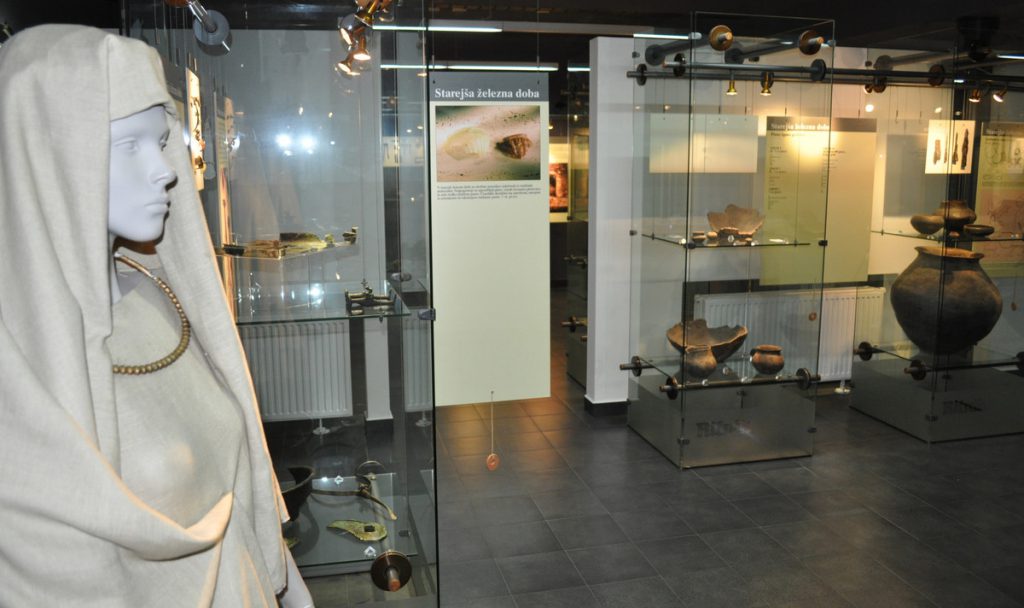
On a Roman Estate
The Villa Rustica, a characteristic estate of the Roman period, encompassed a farmhouse along with various outbuildings. While excavating the village of Mošnje in Radovljica, archaeologists discovered remnants of such a complex. What awaited them was nothing short of a treasure trove: over 6,000 diverse artifacts spanning from the 1st to the 4th century. Among these discoveries were tools, jewellery, ceramics and even a sundial crafted from local tufa stone. You can now witness this archaeological marvel first-hand by traversing the Mošnje Archaeological Trail.
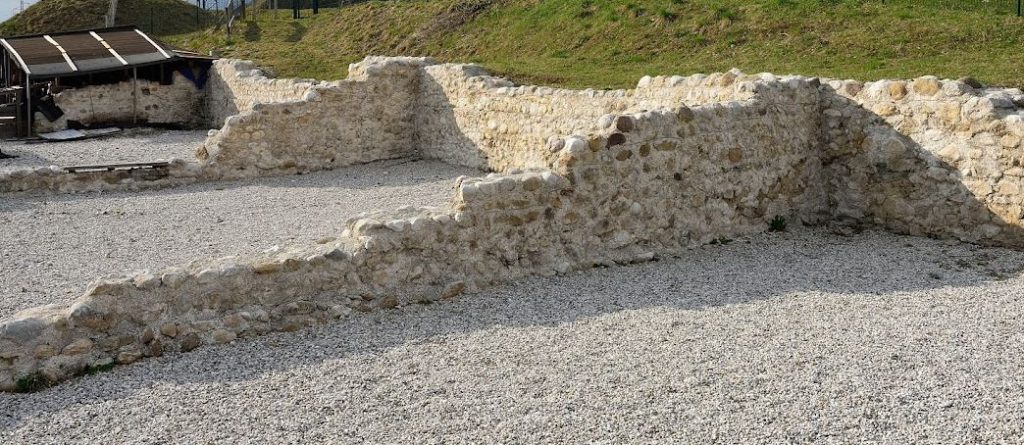
Unveiling Ancient Celje
At the crossroads of important ancient routes, a flourishing settlement was located in the area of Celje between the 1st century BC and the 5th or 6th century AD. It evolved from Celtic Keleia to Roman Celeia, and finally merged with Aquileia. Beneath the Prince’s Court in Celje lies an extraordinary testament to this rich heritage: the largest exhibition of Roman Celeia’s remains in situ. Here, amidst the cellars, you can wander among exquisitely preserved Roman frescoes, marble statues and the remnants of a magnificent, cobbled road that once linked pivotal sites from Aquileia to Emona and Petovione. With its accompanying roadside ditches and pavements, the road today stands as a tangible connection to Celje’s illustrious past. “Celje: The City Beneath the City”, an exhibition at the Celje Regional Museum, promises to unravel even more exciting stories of Celje’s profoundly rich history.
.

Discover Celeia and explore the Celje’s intriguing past as part of the Wonders of Ancient Rome in Celje guided experience. This exciting tour offers a unique opportunity to see The City under the City exhibition, coffee and dessert at one of Celje’s renowned cafes.
Petoviona
Experience the remarkable legacy of Petoviona, the largest Roman settlement on Slovenian soil, which includes almost every corner of Ptuj. Within the Poetovio Archaeological Park, archaeological marvels await you, including iconic symbols of Ptuj’s heritage. Don’t miss the towering Orpheus monument, once a tombstone of a Roman dignitary and later a symbol of shame, along with the revered mithraeums dedicated to the god Mithras. Explore the oldest outdoor lapidary in the country, the Panorama Archaeological Site revealing the buried remnants of Petovione’s quarter, and the Roman kilns used for crafting cobblestones, bricks and vessels … Something special is also the Petovion Pantheon exhibition hosted by the Ptuj–Ormož Regional Museum. And in August, witness the revival of history during the Roman Games, where two-thousand-year-old stories come to life.
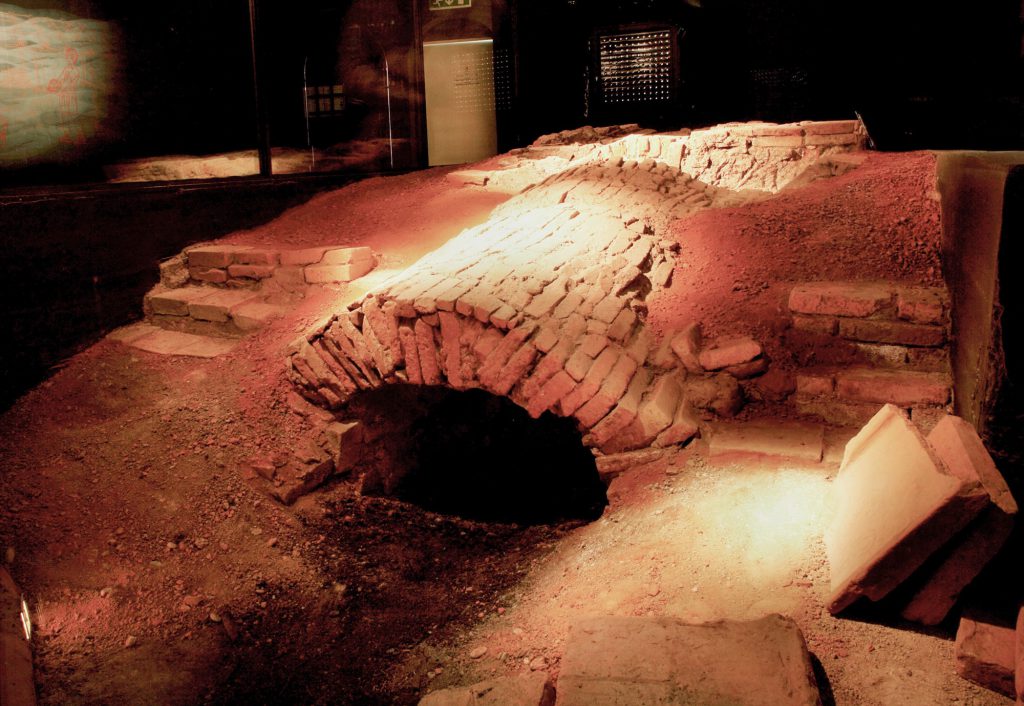
Roman oven
Join legionnaires, artisans and gods as you travel back in time to experience the wonders of Petoviona first-hand.
Mound burial sites
Gold jewellery and urns
Have you ever heard of Sajevce? The small hamlet on the left bank of the Krka is an important prehistoric burial mound. The first mounds were found in the 19th century, but further research has revealed a total of 22 mounds dating back to the 7th century BC, placing it within the Iron Age. The most remarkable find among these discoveries is undoubtedly a delicate head ornament crafted from thin gold sheet, a rarity in Europe for its time, found within the tomb of a wealthy individual from Sajovce. However, Sajevce is not the only archaeological site in Kostanjevica na Krki. Another burial site has been uncovered in the village of Dobe, featuring large urns containing burnt human remains spanning from the Late Bronze Age to the early Iron Age. These invaluable artifacts are now kept in the Posavje Museum Brežice.

The Mortuary Bed
In the rich tapestry of Slovenj Gradec’s archaeological landscape, two sites stand out. The expansive Legen burial mound, boasting 89 mounds, offers an insight into the burial customs of esteemed individuals from the 8th to the 7th century BC. The deceased were burnt at the stake, buried in an urn with an array of artifacts before being laid to rest beneath the earth. Remnants of this ancient practice are showcased in the Soklič Collection at the Carinthian Regional Museum. At the foot of the castle hill in Stari trg once lied the ancient settlement of Kolaciona (Colatio), an integral part of Celeia. The settlement also includes a burial site with several archaeological gems, such as the remains of an extremely rare bony mortuary bed from the third quarter of the 1st century. The Colatio Archaeological Park is part of the burial site, and some of the finds are preserved in the Carinthian Regional Museum.
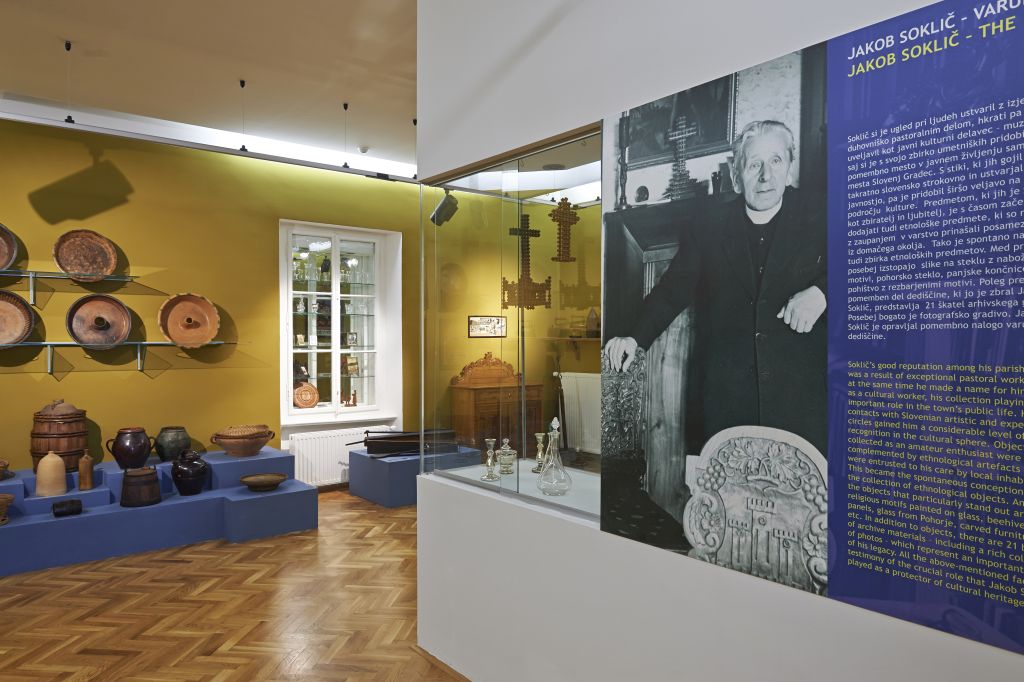
The Celtic Chariot
Systematic research at the Sejmišče burial site in Brežice, dating from between 250 and 150 BC, has unearthed a remarkable and very rare discovery: the remains of three Celtic war chariots. These belonged to Celtic clans renowned as great warriors and feared even by the Romans. Thanks to the well-preserved iron components, archaeologists were able to reconstruct the single-axle Celtic chariot with a double horse-drawn team. Today, this meticulously reconstructed chariot stands not only as a magnificent life-size exhibit within in the permanent exhibition of the Posavje Museum Brežice but also as a fully functional means of transport.

The Treasures of Kapiteljska njiva
Since the 1980s, ongoing excavations atop Marof hill, a beloved hiking spot for the locals of Novo mesto, have unearthed invaluable insights into life during the first millennium BC. The crown jewel of these discoveries is the prehistoric burial site of Kapiteljska njiva in Novo mesto, boasting over 2,000 graves from the 10th to the 1st centuries BC. This era coincided with the flourishing of the iron-ore-rich Dolenjska region, unveiling a treasure trove of archaeological findings. Among these finds are the renowned situlas, ornately decorated bronze drinking vessels, hailed as masterpieces of Iron Age artistry. This is why Novo mesto is known as the “city of situlas”. Greek bronze helmets, amber sourced from the famed Amber Trail and vibrant glass necklaces and bracelets are among the treasures found there as well. These artifacts, which tell the story of the humanity’s earliest footsteps from the Stone Age onwards, are part of “The Archaeological Image of Dolenjska” permanent exhibition ” at the Dolenjska Museum.
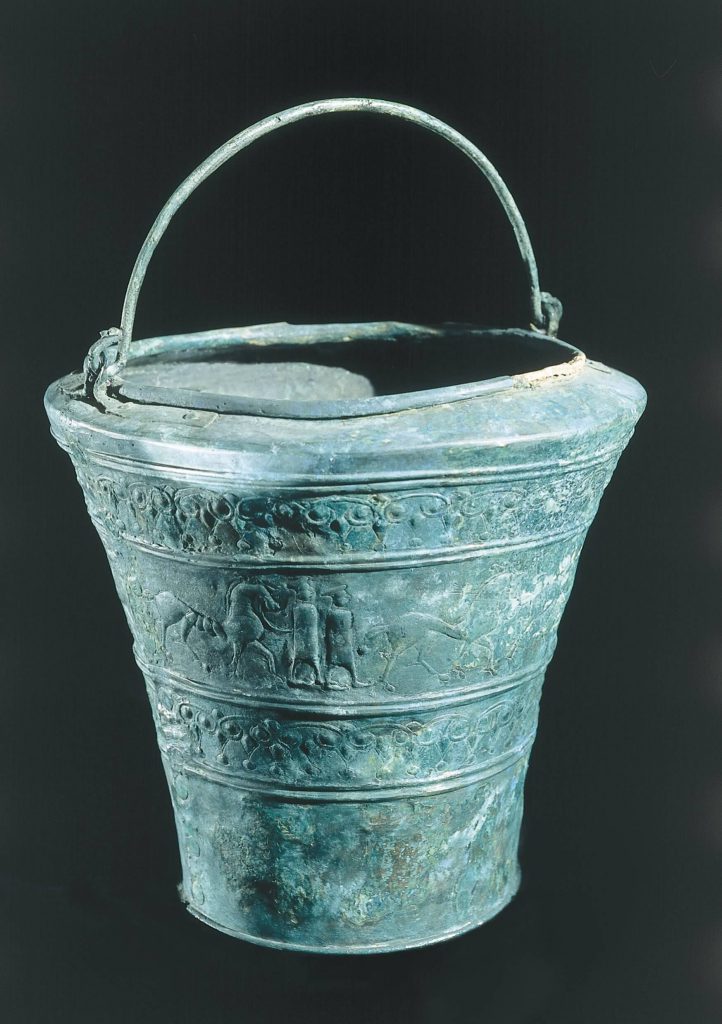
The Situlas Festival is dedicated to honouring the illustrious situlas of Novo mesto, one of Europe’s most treasured cultural heritage sites.
Embark on an exciting journey through time alongside a Hallstatt princess as your guide – choose the From Iron Age to Today’s Vineyard Houses Experience, a captivating adventure the whole family will enjoy.
Explore Slovenia’s historical towns through captivating walks that reveal inspiring stories, highlight key city sights, showcase local cuisine and offer scenic detours to lush green surroundings.


